

PHY 1151
Second Hour Exam
June 26, 2003
Statistics:
High: 94
Mean: 67
Low: 39
1. A 60-kg pilot comes out of a dive by flying along an arc of radius
800 m with a speed at the bottom of 120 km/h. What is her apparent weight at
the bottom of the arc?
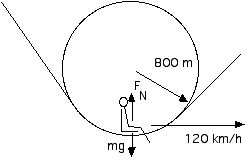
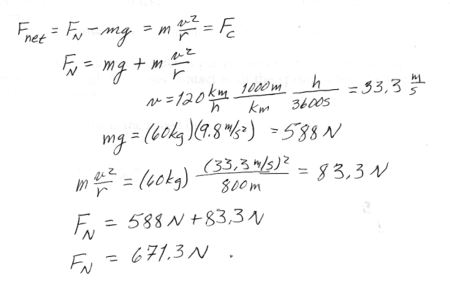
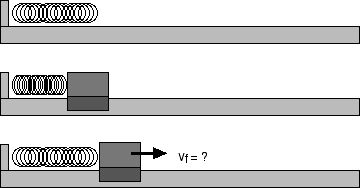
2. At the end of an air track, a spring with spring constant of 50 N/m
is compressed 0.10 m.
a) How much potential energy is stored in the spring?
A 0.200-kg air track glider is placed next to the compressed spring. The spring
is released. The glider looses contact with the spring when the spring returns
to its equilibrium position.
b) What is the speed of the glider as it leaves the spring?
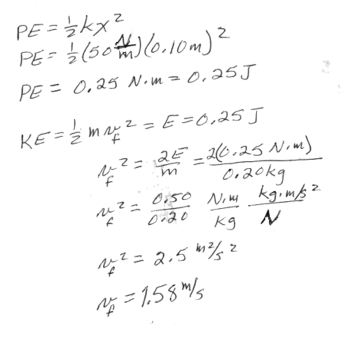
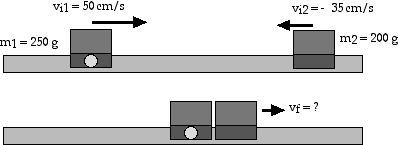
3. Consider a totally inelastic collision between two gliders
on an air track.
The two collide and stick together and move off with a common velocity vf.
Glider #1 has a mass of 250 g (or 0.250 kg) and moves to the right with an initial
speed of 50 cm/s (or vi1 = 0.50 m/s).
Glider #2 has a mass of 200 g (or 0.200 kg) and moves to the left with
an initial speed of 35 cm/s (or vi2 = – 0.35 m/s).
a) Find that common, final velocity vf?
b) What is the total kinetic energy before the collision?
c) What is the total kinetic energy after the collision?
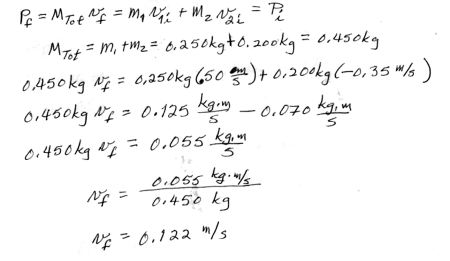
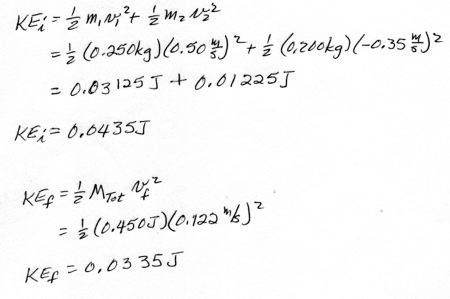
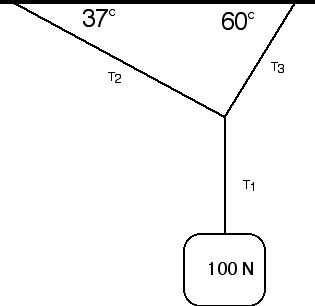
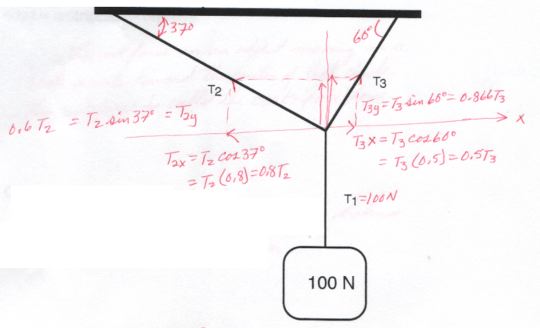
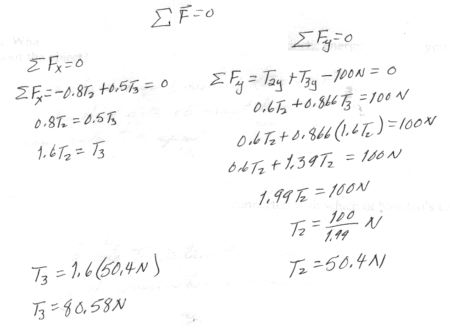
Concept Questions:
i. What is centripetal force?
Centripetal force is the net force
that acts on an object as it moves in a circle; it is directed toward the center
of the circle.
ii. Give a definition, in words, of work.
Work is the product of a force multiplied by the
distance through which the force acts.
iii. What is kinetic energy? If an object has some kinetic
energy, what do you know about the object?
Kinetic energy is energy of motion. If an object
has KE, you know it is moving or has a non-zer velocity.
iv. Conservation of momentum is directly connected with which
of Newton’s Laws of Motion?
Conservation of momentum is connected with Newton’s
Third Law, Fab = - Fba.